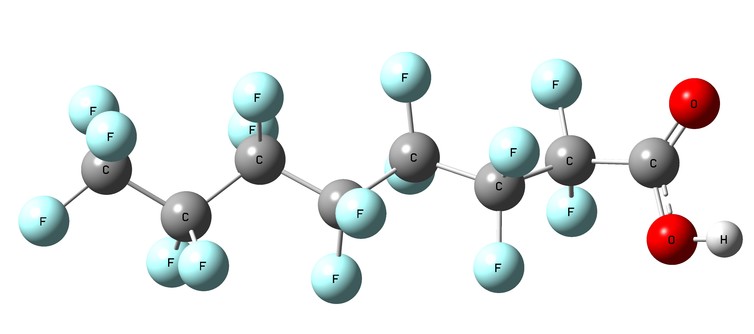The Interstate Technology and Regulatory Council (ITRC) updated their per- and poly-flouroalkyl substances (PFAS) tracking tables, which present current information sorted by State, in January 2023. The tables assist the regulated community in keeping up with changing requirements for evaluating, investigating and remediating PFAS in water, soil and sediment in each State. The ITRC tables include screening levels, standards, criterion, and guidance values (“published values”) for water and soil. While most standards are similar between States, comparison can be difficult as each adds PFAS compounds into its own existing framework of environmental regulations, in which the approach to the protection of receptors can vary significantly.
The ITRC tracking table for water, which includes drinking water, surface water and groundwater, shows twenty-one states have published values for at least perfluorooctanoic acid (PFOA), and perfluorooctane sulfonic acid (PFOS). Another five states have published values, but have not yet adopted standards. Un-listed states are likely relying on USEPA Health Advisories (HA) and Regional Screening Levels (RSL).
In 2022, there were adoptions, revisions, additions, or other actions taken by thirteen states for water. It appears 2023 will be busy as well, starting with Minnesota adopting Surface Water Quality Criteria (SWQC) for numerous PFAS and Pennsylvania promulgating State MCLs for PFOA and PFOS. And so far in March 2023, USEPA published proposed regulations for PFAS in drinking water, and New York has announced new “final water quality guidance values” for PFAS.
Most regulatory activity conducted by states follow EPA actions, which in 2022 included publishing values for perfluorobutane sulfonic acid (PFBS), some regional activity, publishing drinking water RSLs for PFOA and PFOS, and adding RSLs for Gen-X compounds and perfluoro butanoic acid (PFBA). These actions supplemented numerous EPA actions in the last few years using RSLs and HAs, and generally executing their October 2021 PFAS Strategic Roadmap: EPA’s Commitments to Action 2021-2024.
On the soil side, the consistent expansion of published values is evident at both the federal and state levels. ITRC is tracking published values for the soil to water (surface water or groundwater) and the direct contact (human health) pathways. Fourteen states have published values for the soil to water pathway, with relatively large ranges for individual compounds. New Jersey is distinct in its use of Synthetic Precipitation Leaching Procedure (SPLP) to calculate site specific standards for the soil to water migration pathway instead of publishing default concentration values. Twenty one states have published values for the direct contact pathway. Many of these states have variable standards based on property use.
With more than 15 individual PFAS compounds each, Hawaii and Texas have the longest list of published values values for both soil and water. Other listed State agencies include about 5 to 10 compounds, mostly mirroring USEPA RSLs as they are issued. The range and average concentration of the most common compounds with published values are presented in the tables below. .
| PFAS Published Value Summary – Water | |||||
| PFOA | PFOS | PFNA | PFHxS | PFHpA | |
| Maximum | 2.0000 | 0.6670 | 0.7000 | 0.5600 | 0.3700 |
| Minimum | 0.000004 | 0.000020 | 0.0020 | 0.0020 | 0.0020 |
| Average | 0.1052 | 0.0671 | 0.0330 | 0.0838 | 0.0693 |
Includes USEPA and States with published values for listed PFAS. Several published values associated with less-protected receptors not included.
| PFAS Published Value Summary for Soil — Soil to Water Pathway (mg/L) | |||||
| PFOA | PFOS | PFNA | PFHxS | PFBS | |
| Maximum | 0.0170 | 0.0500 | 0.0031 | 0.0020 | 7.10 |
| Minimum | 0.000004 | 0.00001 | 0.0000048 | 0.000026 | 0.00012 |
| Average | 0.0027 | 0.007 | 0.0009 | 0.0009 | 1.02 |
| PFAS Published Value Summary for Soil — Human Health (mg/L) | |||||
| PFOA | PFOS | PFNA | PFHxS | PFBS | |
| Maximum | 35.0 | 3.2 | 1.4 | 1.6 | 1800.0 |
| Minimum | 0.00066 | 0.00088 | 0.00280 | 0.01200 | 0.38000 |
| Average | 2.29 | 0.95 | 0.53 | 0.68 | 545.46 |
Includes USEPA and States with published values for listed PFAS. Several published values associated with less-protected receptors not included.
Source material: https://pfas-1.itrcweb.org/fact-sheets/
Previous related post: On June 15, 2022, the US Environmental Protection Agency (EPA) posted new health advisories for four perfluoroalkyl substances (PFAS) in drinking water. EPA’s health advisories identify the concentration of chemicals in drinking water at or below which adverse health effects are not anticipated to occur. Health advisories are non-regulatory and reflect EPA’s assessment of the best available peer-reviewed science. Previous advisories for other PFAS compounds in drinking water were on the order of 70 parts per trillion, and resulted in the adoption of similar and lower standards at the state level. The new advisory includes the compounds listed below. Additional state level actions are expected based on this advisory.
- PFOA at 0.004 parts per trillion (ppt)
- PFOS at 0.02 ppt
- GenX chemicals at 10 ppt
- PFBS at 2,000 ppt
EPA has a detailed plan, known as the PFAS Strategic Roadmap, to integrate PFAS into their water supply, waste and remediation regulations, with the proposal of PFAS National Drinking Water Regulations in the fall of 2022 as the centerpiece. In parallel, they are advancing numerous supporting tasks including:
- conducting further health studies;
- developing water treatment technologies;
- issuing an Unregulated Contaminant Monitoring Rule;
- issuing a Toxic Substances Control Act PFAS test order;
- adding PFAS to EPA’s contaminated site cleanup tables;
- publishing draft aquatic life water quality criteria; and
- modifying air and water discharge requirements.

